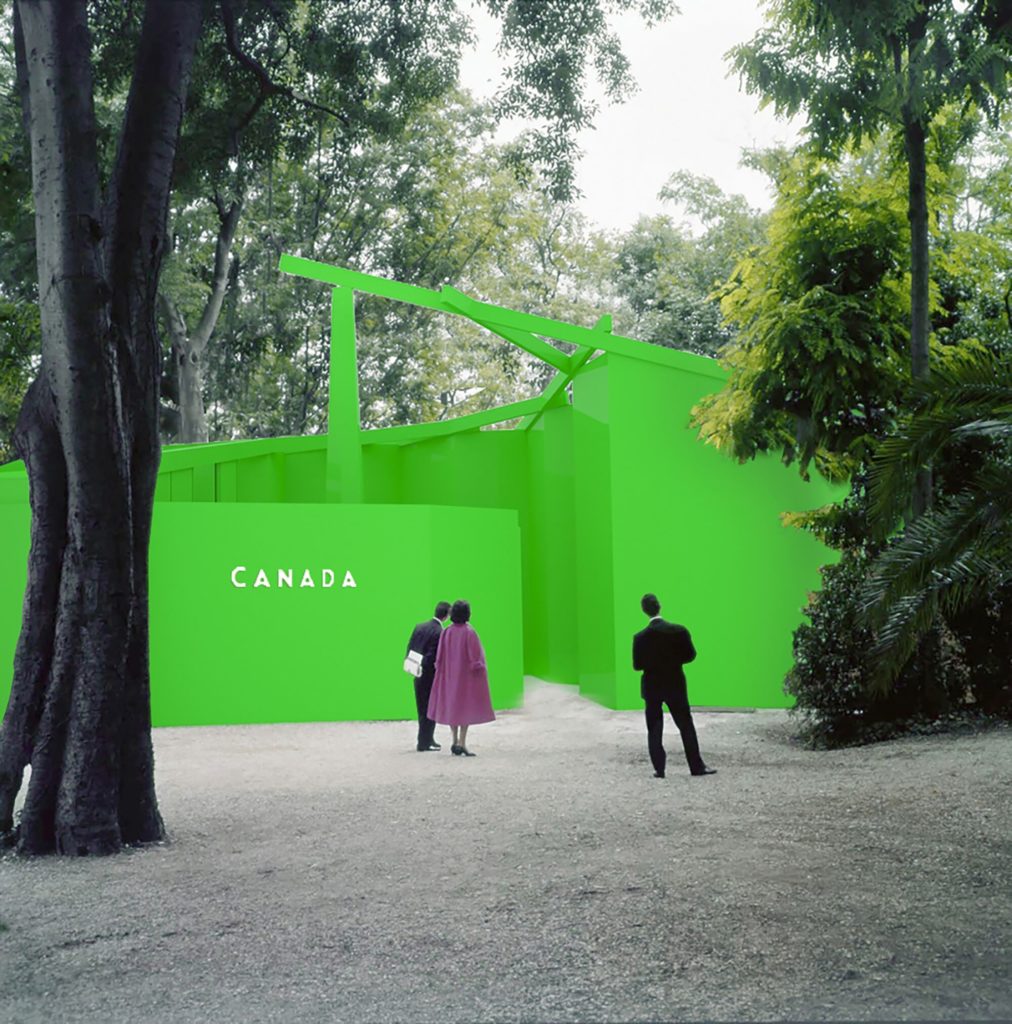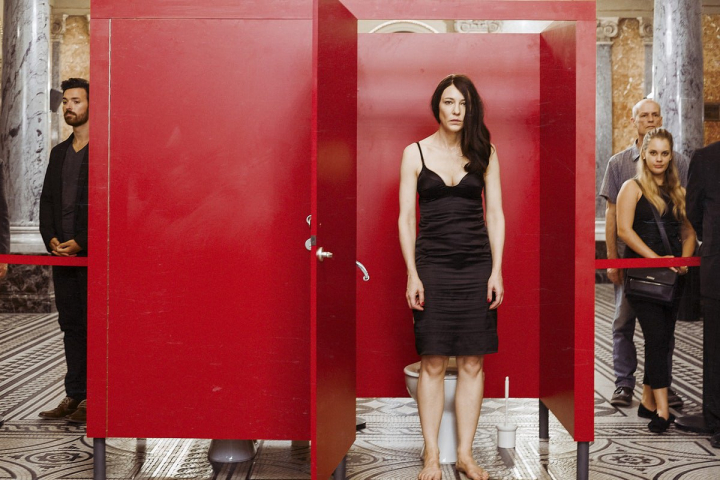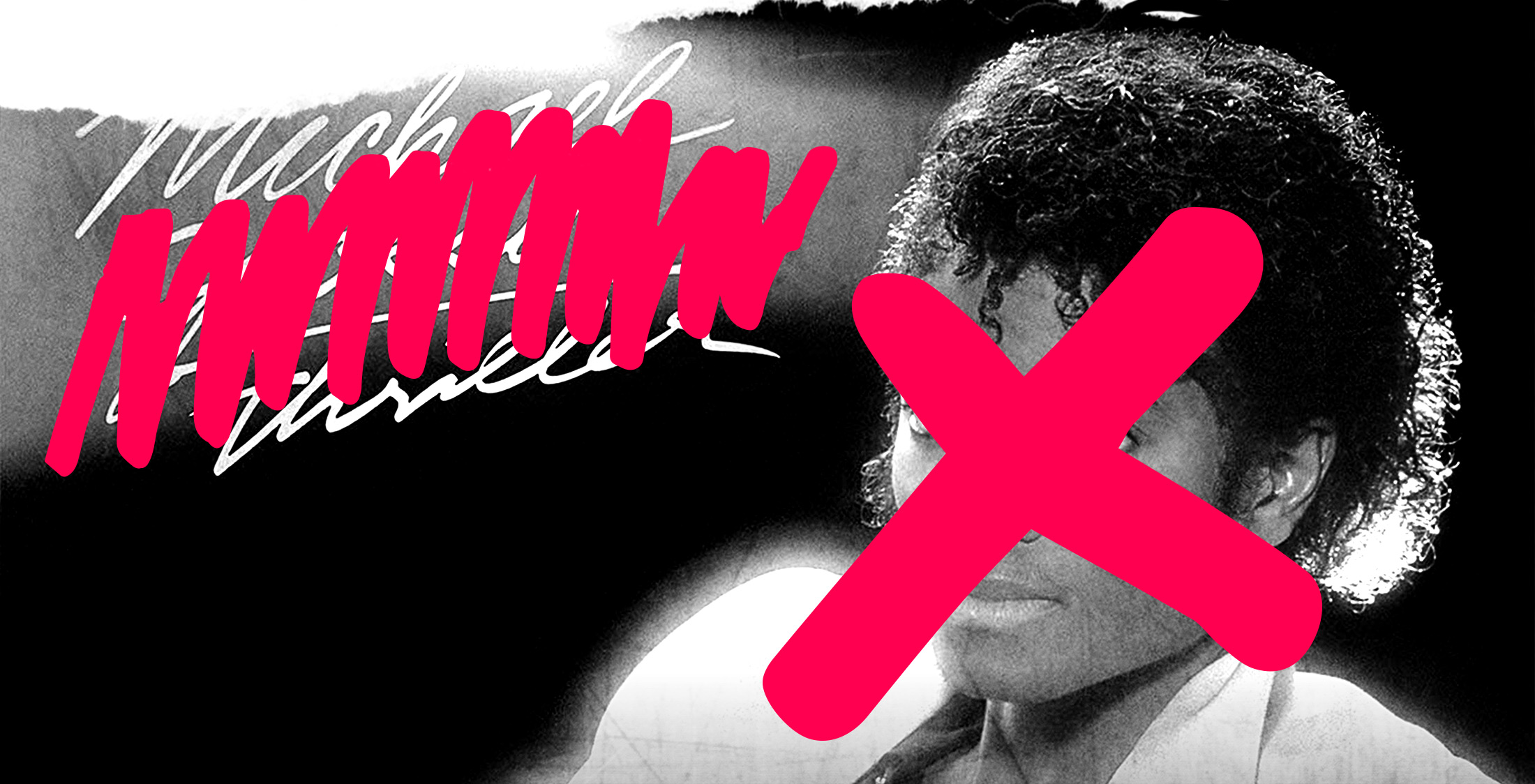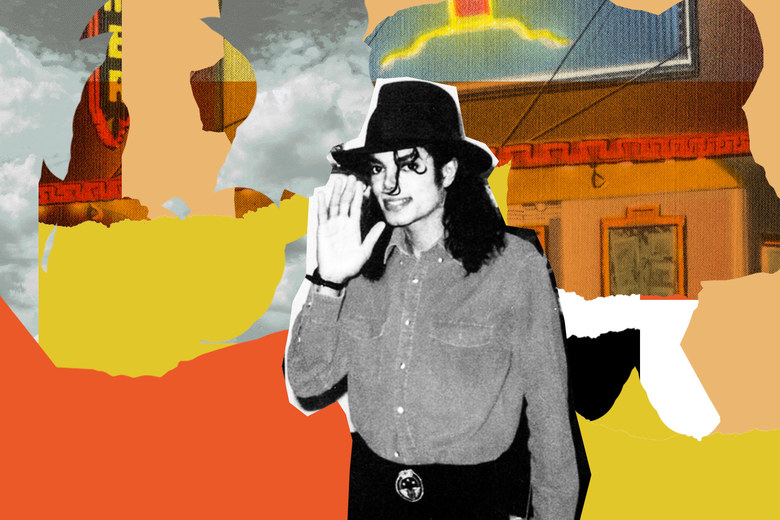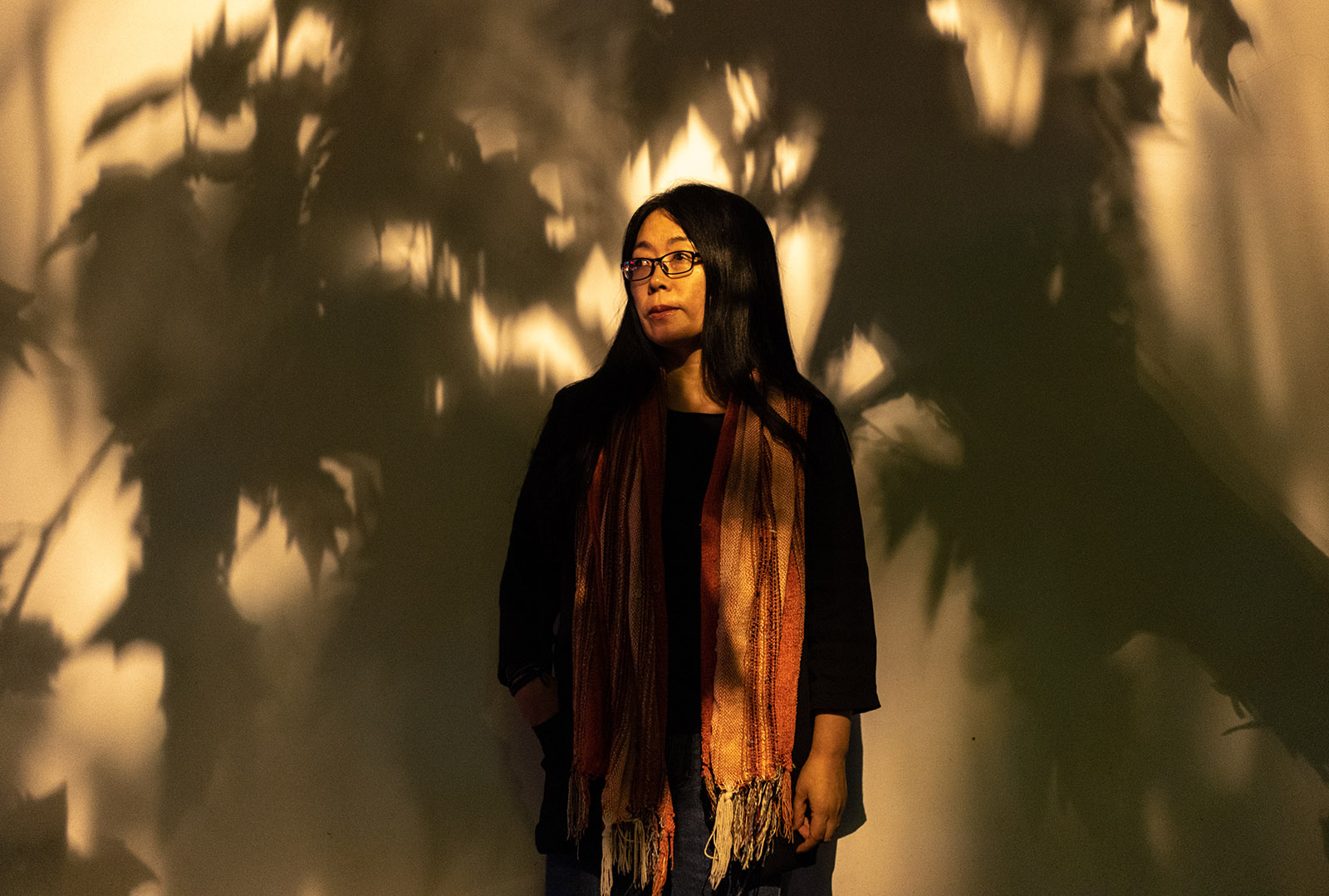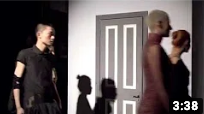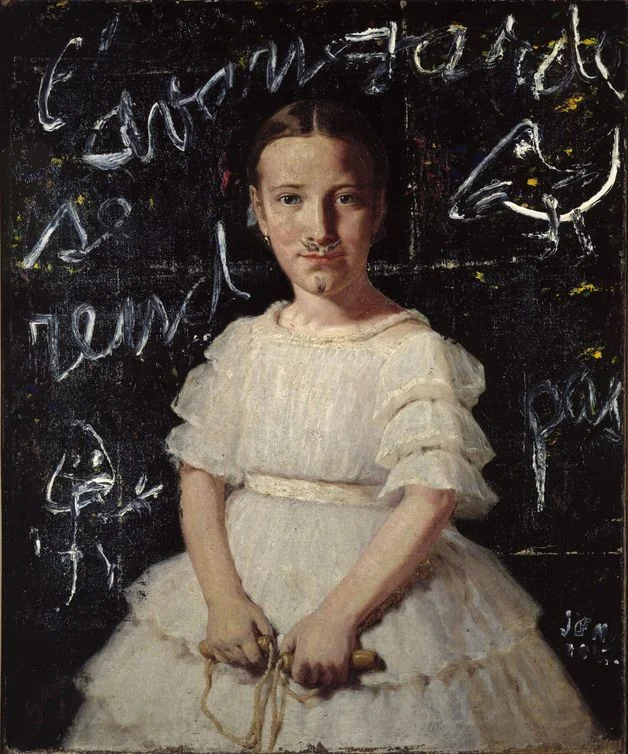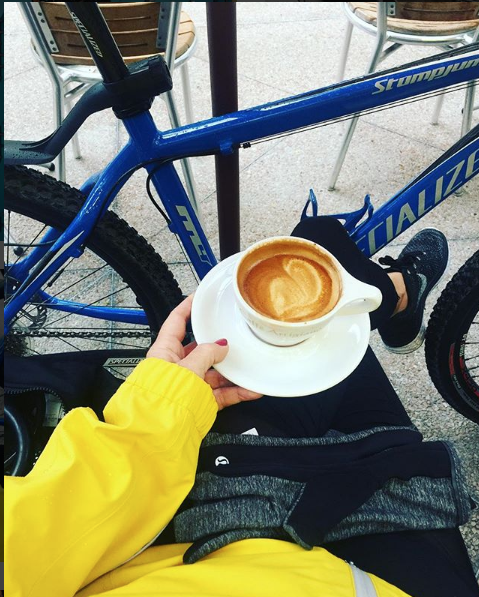In terms of content, Baumeister finds inspiration in another related group of twentieth century avant-garde artists—the Dada and Surrealists— who worked to disrupt the representation of stable objects through strategies of satire, irreverence, and the upending of expectations around art and the role of the artist. Baumeister references, for example, Berlin Dada artist George Grosz, whose drawings and paintings ruthlessly critiqued German society as it gave way to Nazi rule. Not surprisingly, Baumeister aligns her own political and social interests as an artist with that of Grosz, encouraging her audience to pay closer attention, and, in her own words, “read the fine print” in a world that is not always as it appears. Baumeister also raises the importance of Belgian Surrealist artist René Magritte, whose famous work The Treachery of Images (Ceci n’est pas une pipe) (1929) reveals the ever-present chasm between language, image, and meaning. Magritte’s proposition finds deep resonance in several of Baumeister’s works, perhaps most poignantly in her watercolour painting Avalanche (1997) which re-presents and playfully disassembles the semiotics of a tourist postcard.
Turning closer to home, Baumeister is well situated in a city that often prizes a more conceptual approach to art. And while as a painter she has not taken up the camera, motion pictures, or the screen as directly as most artists associated with Vancouver photo-conceptualism, Baumeister is closely aligned with many concerns and interests among a range of Lower Mainland artists through explorations into the crisis of representation and the desire to subvert signs associated with the landscape and human environment. Baumeister’s featured art work for the exhibition, One of a Kind? (2017), offers one such potent example. Arranged as a large-scale piece made up of fourteen digitally printed canvases surrounding an original oil painting, the work becomes apparent to the viewer upon closer observation when it is realized that the content printed on each of the canvasses is a digital copy of the oil painting. As Baumeister explains, the subject of the original painting—dahlia flowers — was connected both to her online identity as a floral painter (the paintings she sells to a wide public to earn a living), and to a subject matter that she had learned to reproduce through many years of repetitive composition and multi-media formats (graphite, watercolour, acrylics, and oil). Repetition and the copy were foremost in her mind when she conceived the piece, but also, as she describes, “the problem of authenticating what occurs in the real world.” Sharing examples with me, ranging from the problem of locating the original source of honey (sometimes marketed as originating from places that don’t actually have honey bees), to the difficulty of differentiating synthetic from naturally made fabrics, Baumeister’s intention was to replicate a similar process in One of a Kind?. Audiences would be confronted with the question of what changed and/or was lost in the move from her original handmade painting to the enlarged digital facsimile made by a machine.
One of a Kind? offers an important meditation on questions of the original and even a reassessment of how Walter Benjamin’s concept of the aura—the uniqueness and aesthetic experience associated with being in the presence of an original work of art—can be recast in a twenty-first century world.[2] As Balsom argues, “understanding what counts as ‘art after the internet’ might necessitate expanding one’s purview far beyond artworks produced through digital means.”[3] At the same time, the work is deeply ironic, evoking questions and even cynical reflections on an art world and emerging generation of artists that appear to be losing something in a world where scanning, feeds, and fake news supplant deeper reading, visual literacy, and historical perspective. As Baumeister and I discuss at some length, there is a sense that something deeper, more embodied, and truly lived and experienced, is desired by many. “Time is the only commodity you have,” Baumeister offers, “and it’s how you spend it that is so important. I keep watching these young kids scanning as opposed to living; and I know enough about perception to know that the things we take in are what we ultimately use to create structures and put all other information onto. And if the structure is already filtered through someone else’s lens, and not real, as in experienced through your own senses, how do you authenticate something?” Indeed, the question of how and to what ends art will be created, produced, and disseminated in the future appears closely tied to similar crises around representation, time, and mechanisms of industrialization experienced over a century ago. This time, however, the stakes appear much higher, with spatial and temporal dislocations fundamentally recasting the world of human perception. As internet artist Brad Troemel argues in “Art After Social Media,” “…for the generation of artists coming of age today, it’s the high-volume, high paced endeavour of social media’s attention economy that mimics the digital economy of stock trading… For these artists, art is no longer merely traded like a stock—it is created like one too.”[4]
What can painting teach us today? This is one of the enduring questions we are left with when encountering In the Realm of Perception. And while it is true that painting has faced pronouncements of its imminent death many times over the past half century, there is something clearly timely and deeply significant about studying the nature of perception through this particular medium.[5] As Art historian David Joselit has suggested, pointing to the “transitive” nature of our world today, a world in which digital networks routinely translate cultural artifacts into code, there is something to behold and learn when a body of painting “is submitted to infinite dislocations, fragmentations, and degradations.”[6] Clearly, as Baumeister observes, there are many undiscovered connections yet to be made and the capacity of art to nurture individuals goes hand in hand with human connection, “For me, my analog world is real to me, it comes from my senses, and I’m certain that is how we authenticate and ground our external experience of our world… I’m always bringing it back to that when I’m painting. I want to create a map of sorts, of something that I feel, I see, I hear, I think, and try to distill the proper components so that you could read the same thing, if you wanted to, or create a paradigm where the relationship between the items creates a meaning.”
[1] Erika Balsom, “Against the Novelty of New Media: The Resuscitation of the Authentic,” in You Are Here—Art After the Internet, ed. Omar Kholeif (Manchester, HOME and SPACE Press, 2017), 76.
[2] See Walter Benjamin, “The Work of Art in the Age of Mechanical Reproduction,” in Illuminations ed. Hannah Arendt. New York, Schocken, 1969, 217-259.
[3] Balsom.
[4] Brad Troemel, “Art After Social Media,” You Are Here—Art After the Internet, ed. Omar Kholeif (Manchester, HOME and SPACE Press, 2017), 42.
[5] See for example Douglas Crimp, “There is No Final Picture: A Conversation Between Philip Kaiser and Douglas Crimp,” in Painting on the Move, ed. Bernhard Mendes et al (Basel: Kunstmuseum Basel and Schwabe, 2002), 171-179.
[6] David Joselit, “Painting Beside Itself,” October vol. 130 (Fall, 2009): 134.]


